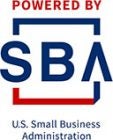Feeling Squeezed? Push Past These Eight Barriers to Small Business Growth
While launching a small business comes with a long list of tasks you’ve mastered, growing a business can also dish up a unique set of challenges to surmount. Are you an established business owner, experiencing some of these pain points that are holding your business back from growing to its full potential? Our in-house business growth expert, Paul Harden, identified these eight common growth barriers and offers regular workshops to help you take the next step.
- Working in your business instead of working on your business
It’s easy to get sucked into the day-to-day operations of your small business: customer service, fulfilling orders, covering for employees, and putting out fires. But those things prevent you from forming a realistic and compelling strategic vision of where you want your business to go. You need to get out of the daily minutiae of working in your business so that you can focus on the big picture. That can mean getting trusted, trained employees in place to manage daily tasks and all but the most dire of crises, finding a workspace far removed from daily distractions, or even foregoing small growth opportunities in order to be prepared for the big ones. - Limited (or no) strategic vision
Business growth doesn’t happen on a lazy Sunday drive. You need a map, and a mission. Once you’ve stepped back from day to day problems, you need to identify what direction you’re taking for growth. New products? New services? New markets? And then check your goal to make sure it encompasses all the possibilities. If your business isn’t limited by geography, why not consider expanding beyond RI, into New England–or even nationwide and into global markets? If your product serves one demographic, does it have another market? Your goals shouldn’t be so lofty they’re unattainable, but take the time to hunt around for all the growth you can squeeze out of the work you’ve already put into your venture. - Cash flow problems
When established small business owners meet with us, looking to grow, it’s important to understand the source of the cash flow problems. It may be coming from rapid growth: for hard goods, if your sales have increased, you may be shipping more product (spending money on raw materials and payroll) but not getting paid for 30-90 days. But cash flow problems might also mean your margin is too narrow, which would require taking a hard look at business costs. Or perhaps your business started with insufficient cash resources, and needs to take more time to build up capital before growth is warranted. Inadequate cash flow can prevent your business from taking advantage of quantity discounts (sometimes offered for quick payment), which is an operational inefficiency. Or an owner may be using credit cards or a line of credit to pay expenses, while unable to pay off the credit timely, thus paying much higher interest rates for money. Establishing solid cash flow and removing inefficiencies from your business are critical to planning for sustainable growth. - Unclear expenses
If you don’t have a broad knowledge of–and tight rein on–your expenses, you’re pretty much guaranteed to be missing out on your bottom line. For businesses with razor-thin margins, like grocery stores at 1-2%, this is critical. But even for businesses with larger profit margins, the inefficiencies in unknown expenses can threaten expansion. It’s important to sift through and fully identify all expenses, so that you can identify a strategy to lower them so that your small business can grow. - Outdated marketing strategy
What do you know about your customers? Have your clients changed, or their needs? Are you marketing where your customers are? Where your competitors are? Are you pursuing the right marketing channels, with the highest possible ROI? If you’re spending money on marketing but not seeing results, then your marketing strategy and customer research needs an update. And if your marketing is out of date or your customer base has changed, you may as well be throwing that money to the wind. An updated strategy, customer research, and redeployment of marketing dollars may be warranted to make sure you’re reaching the right base and differentiating yourself from your competitors to stand out above the crowd. - Marketing dollars deficit
The perfect marketing strategy (that you developed after reading #5) can’t get you anywhere if you’re not putting money behind it. It can feel like a large expense to get good results in marketing, but it’s a necessary investment. Marketing is often one of the first things cut when sales are down and money is tight, but it’s a catch-22, and under-spending on marketing will prevent you from exposing your business to potential customers who would increase sales. And while social media is a great way to reinforce your brand while increasing exposure, you can’t expect to do it all for free. Don’t skimp on dedicated, targeted marketing dollars even in lean times. A better tactic when you’re experiencing a drop in sales is to dive deep and ask hard questions about why sales are down, and what is making your business less competitive. - Subpar or outdated customer service
Customers expect an unprecedented level of customer service in this business climate. Ubiquitous social media primes them to expect to receive a response to questions or concerns in minutes, not even hours (much less the next day). And it enables them to tell the world instantly all about their experience with your brand, which can lead to poor reviews if their expectations are far off from their experience with your brand and it wasn’t managed well by your team. Repeat customers form the core of most business success, and thus growth is impossible if your venture isn’t retaining patrons. Spend time ensuring your customer service policies and training are robust and up-to-date, with best practices clearly outlined, and sufficient staff to address the number of issues arising. - Insufficient R&D
No matter how great your initial product or service, your small business can only grow if it reinvents itself to stay at the top of its game. This could be actual technology for a tech-driven company, or an updated menu for a restaurant, or even new techniques and offerings for service providers. To sustain small business growth, make it a budget priority to fund product advancement, innovation, and staff growth.
The RISBDC Growth Hub initiative helps established small businesses maximize the opportunities and minimize the risks associated with growth prospects. We regularly offer Growth Hub workshops for entrepreneurs who are ready to work on their business instead of just in their business, with further dedicated one-to-one, no-cost small business counseling for clients who are ready to put in the time needed to take the next steps.
To prepare to work with a small business counselor, entrepreneurs across all industries should attend a Growth Hub workshop (“Business Growth: Taking the Next Step”) and spend some time thinking about how your company is looking to grow. Even if you’re still dealing with some of the barriers above, the Growth Hub workshop is a great place to pave the way for when you’re ready to move forward.




